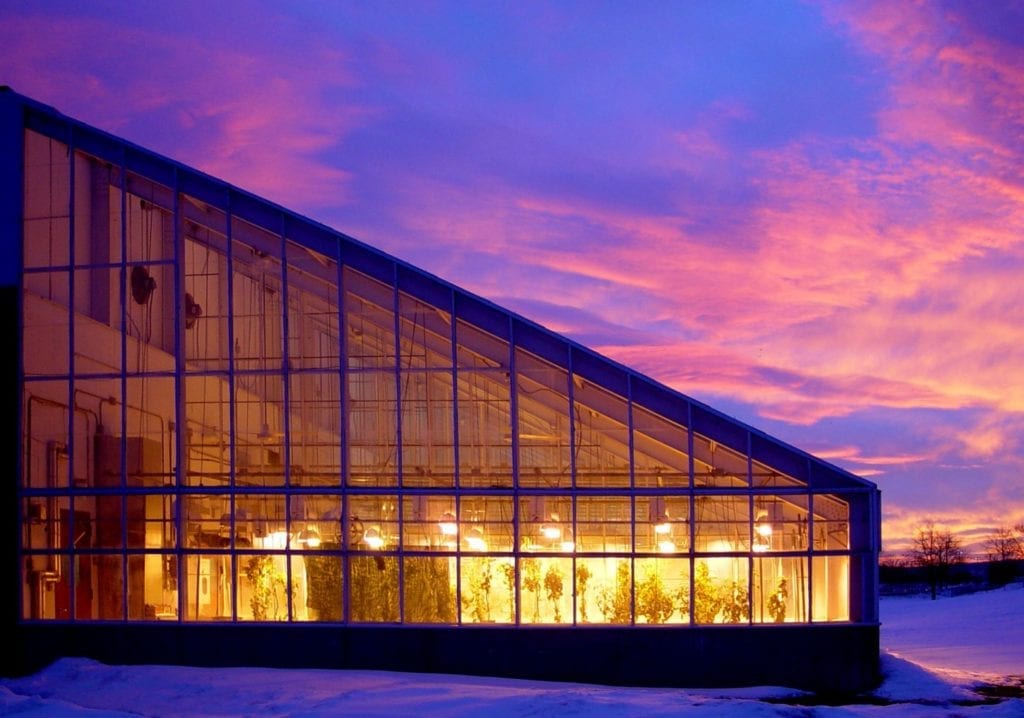Strategic Plan
Strategic Plan 2018-2023
From August to November of 2017, BTI’s faculty, staff, and Board of Directors participated in a series of facilitated activities to develop the Institute’s strategic vision for 2018 – 2023. A tool referred to as scenario planning was used to imagine four alternative futures, 20 years ahead, and create strategies that would maximize BTI’s scientific and societal impact regardless of which of these very different scenario(s) predominate. The process was built through surveys and interviews, a faculty-staff retreat, Scientific Advisory Board input, a board and leadership team retreat, additional faculty-led discussions, and other forms of feedback. Finally, the plan was presented to the Board of Directors on May 9, 2018 and enthusiastically endorsed. The Plan is a living document, as scenario thinking requires continual recognition of, and adaptation to, evolving circumstances.
Last updated: May 9, 2018
Strategy 1.0: Reimagine professional development, workplace culture, succession, and hiring.
This objective encompasses maintaining BTI’s mission focus on scientific discovery in plant biology while navigating in a dynamic external environment.
Objectives:
1.1 Build scientific talent in-house through training activities that improve research and transferable skills, and implement support staff cross-training as part of a comprehensive succession plan.
1.2 Attract and retain strong talent, while being inclusive of those who may have otherwise deselected plant science research because of burdens and perceptions associated with traditional academic careers.
1.3 Hire scientists that combine core expertise with team and multi-disciplinary capacity.
1.4 Develop novel career paths as alternatives to traditional tenure-track appointments.
1.5 Set policies and goals, including updated values, to encourage a more diverse workforce.
Strategy 2.0: Reimagine the discovery research environment and infrastructure.
This objective addresses BTI’s space and technological platform for communication and local or distance collaboration.
Objectives:
2.1. Expand collaboration spaces and opportunities within the existing facility.
2.2 Optimize communication platforms for real-time virtual collaboration.
2.3 Develop and support the appropriate dynamic mix of local and cloud-based computational capacity,
both in terms of infrastructure and human resources.
2.4 Plan towards renovating the BTI facility in the coming decade through stakeholder and donor
engagement.
Strategy 3.0: Execute robust plans for relational and financial resource growth.
This objective encompasses growing private and public funding and collaborations through enhanced messaging and relationship building. Goals are to support the discovery mission of the Institute, increase its recognition among the science community and potential funders, engage the next generation of scientists, and participate in promoting and explaining science to a sometimes-skeptical public.
Objectives:
3.1 Implement a strategy for cultivation and stewardship of new and existing donors, with an aim for aggressive growth in preparation for the future (including a centennial campaign).
3.2 Leverage BTI relationships, and other resources to achieve philanthropic goals through a culture of collaboration among faculty, staff, board, and supporters.
3.3 Execute a strategic integrated communications and marketing plan targeting alternative revenue
streams, including IP, corporate, foundation, alumni and major gifts.
3.4 In collaboration with BTI scientists, amplify BTI’s brand/research within the broader science
community, and participate in activities that engage the general public, including those skeptical of the impact of science.
3.5 Inspire and prepare the next generation of scientists for future STEM careers through internship
programs and impactful outreach initiatives, while generating community stewardship and brand
awareness.
Strategy 4.0: Strategically strengthen the mutually beneficial relationship with Cornell.
This objective encompasses strengthening Cornell relationships includes CALS, SIPS, facilities and administration, and other sectors of the University that have not traditionally been strong BTI partners.
Objectives:
4.1 Collaborate with Cornell when possible to offer “T-training” to students, postdocs, and others, that addresses training needs beyond the laboratory, supports career development beyond traditional academic positions, and helps to broaden participation and strengthen BTI’s identity.
4.2 Find and execute ways that BTI can add value to Cornell and that Cornell can support BTI’s
transformative strategy in scientific discovery through shared facilities, and research and business
collaboration.
Strategy 5.0: Translate discoveries to real world applications and value.
This objective encompasses strengthening the technology transfer pipeline, thus enhancing BTI’s impact, developing new funding sources, and potentially monetizing discoveries.
Objectives:
5.1 Engage collaborators to translate discoveries to solve societal problems through partnerships, licensing and spin-offs.
5.2 Emphasize corporate and entrepreneur relationships to underwrite and achieve discovery goals of
mutual interest.
5.3 Enhance BTI’s capacity in intellectual property protection and market development.
Decadal Vision
The Plant Science Research Network (PSRN) was assembled to develop an inclusive, common vision across the plant science research community to promote interdisciplinary integration of ideas and approaches.
The Decadal Vision, a collaborative effort of the PSRN, outlines bold, innovative solutions to guide investments and research in plant science and was developed as a powerful tool for communication and advocacy.
Goals
-
- Harness Plants for Planetary Resilience
- Advance Technology for Diversity-Driven Sustainable Plant Production Systems
- Develop 21st-Century Applications of Plant Science to Improve Nutrition, Health, and Well-Being
- Launch the Transparent Plant, an Interactive Tool to Discern Mechanisms and Solve Urgent and Vexing Problems
- Reimagine the Workplace to Nurture Adaptive and Diverse Scientists
- Build Capacity and Interest to Engage with Plant Science
- Develop New Technologies to Revolutionize Research
- Manage and Realize the Potential of Big Data


